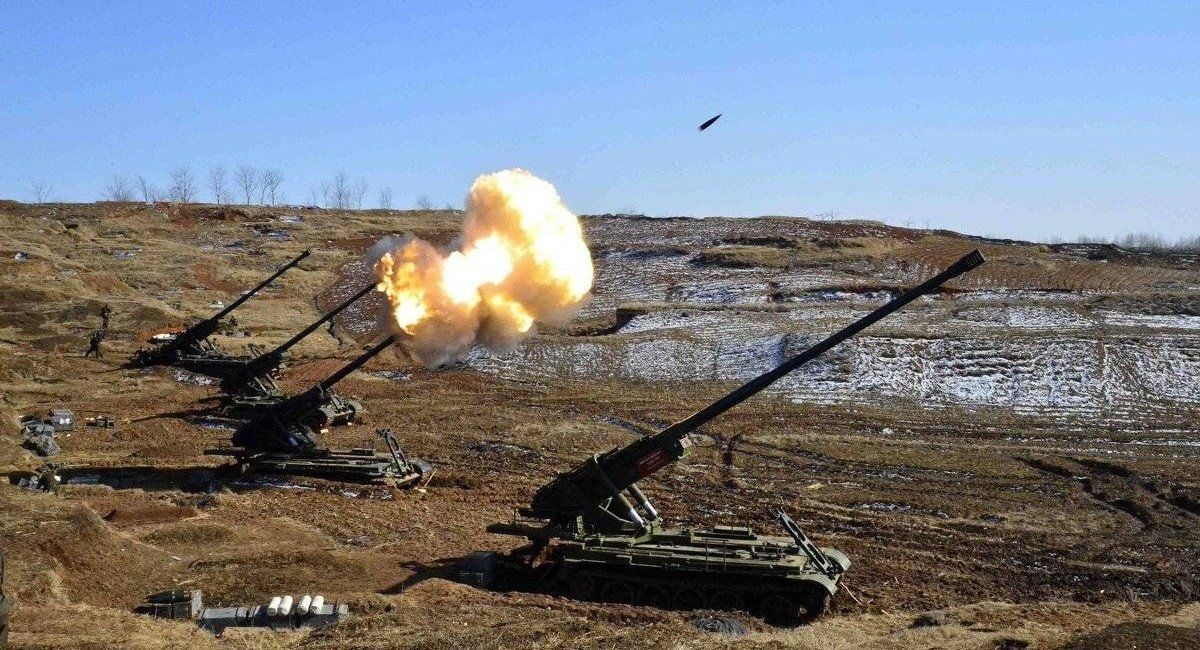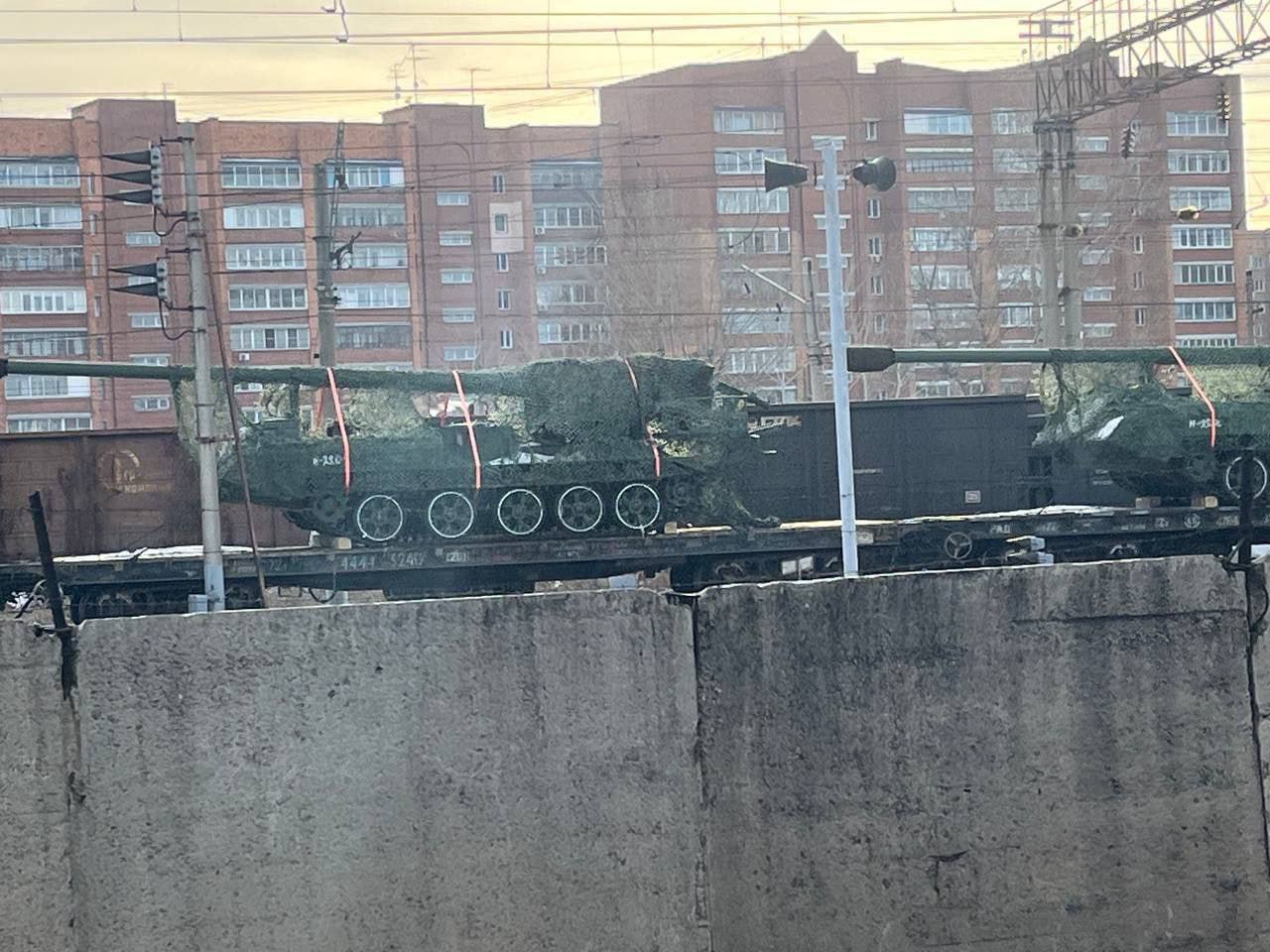Korean M1989 Koksan long-range self-propelled artillery systems spotted in Russia

North Korea's long-range 170mm M1989 Koksan howitzers were probably first spotted in Russia during their transport by rail.
Here's What We Know
On a railway platform in Krasnoyarsk, Russia, a vehicle was spotted that resembles an M1989 Koksan self-propelled howitzer by its silhouette and characteristic five-rollers. The location of the echelon was geolocated by the Twitter account Status-6.
This North Korean artillery piece is distinguished by its rare 170 mm calibre. Due to its long barrel, it has a considerable range: up to 40 km with conventional shells and up to 60 km with active-reactive shells. The rate of fire is 1-2 shots every five minutes.
This performance far exceeds the capabilities of all the Russian army's cannon artillery. The only other model with a similar range is the Soviet 203-mm 2S7 Peon cannon with active-reactive rockets.

The M1989 Koksan is the code name for a North Korean 40-tonne self-propelled artillery system first demonstrated at a parade in the city of Koksan in 1989. It is an upgraded version of the M1978 system, which was developed in the 1970s.
The Koksan self-propelled artillery system was designed as a strategic weapon for deep artillery strikes on the South Korean capital. Its early version was already used in combat during the Iran-Iraq war of the 1980s. In particular, in January 1987, during the Kerbala 5 operation, the Iranian army used these systems for massive attacks on the Basra area.
Today, the M1989 Koksan can pose a serious threat as a counter-battery weapon. Its range allows it to fire at the positions of Ukrainian long-range artillery systems, including PzH 2000, CAESAR and 2S22 Bogdan. In addition, the Russians have access to North Korean stockpiles of 170mm ammunition.
Source: X